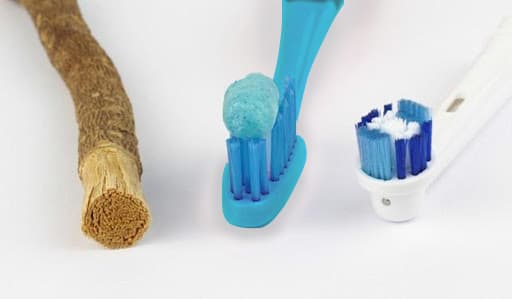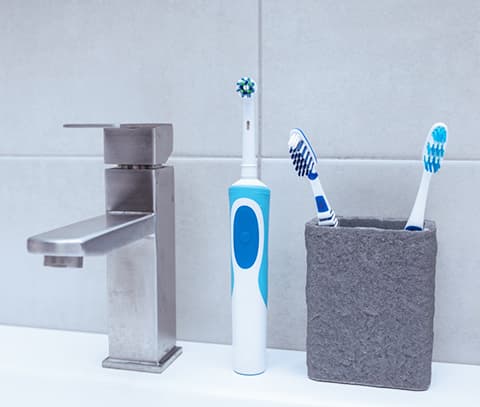WHAT IS THE BEST TOOTHBRUSH?
Have you ever wondered if the toothbrush you are using is actually doing a good job for you? Your toothbrush is a vital oral care instrument in keeping your pearly whites clean – and for most, the only tool they use to achieve this goal. However, many of us may not be aware but choosing the wrong toothbrush may actually do you more harm than good. So how then do we choose the best one?
The earliest recorded predecessors of what we know now as toothbrushes were documented as far back at 3500-3000 BC. Back then, the Babylonians and Egyptians used twigs from trees with frayed ends as “chew sticks” to clean their teeth. The form that we are familiar with now – the one with bristles- were believed to have been invented by the Chinese during the 1400s. These early prototypes used pig’s hair for bristles and bone or bamboo for their handles. When these were brought to Europe, they substituted the bristles to horse hairs or feathers. Then came Sir William Addis from England who designed the toothbrush the way we know it now in 1780.
Lucky for us, these brushes have been developed and improved constantly over the years and now we have a bevy of choices to choose from. The two main categories are: manual and electric toothbrushes. Each kind comes in different forms and sizes, offering both benefits and disadvantages as well. Nowadays, we have veered away from using animal hairs as bristles (thank God) and typically, nylon is used for this purpose. On the other hand, handles are usually made of plastic nowadays. Thankfully, no more bones or wood are currently being used for this.
 From left to right: the ancient chew stick made of twigs, the manual toothbrush, the electric variant
From left to right: the ancient chew stick made of twigs, the manual toothbrush, the electric variant
|
We now go back to the question we posted earlier: how then do you choose which toothbrush is the best for you? The main thing you have to look at is the bristles. They must be as soft as they can be! Make sure also that they have rounded tips. They may all be made of nylon but some have been crafted to be much thinner, silkier and softer than others – and this is the kind that you should look for. Choose the one that have bristles that seem like they are too soft to clean your teeth. Why? The reason is simple. Harder bristles make it so easy for us to put unnecessary pressure or force on our teeth and gums as we clean that more harmful effects are done instead of cleaning them. Coupled with applying the wrong strokes and brushing technique, hard bristles can make our gums recede leading to sensitivity around the necks of our teeth. And since tougher bristles tend to be more abrasive, they can also wear out the enamel (outermost layer of our teeth) near the necks of our teeth causing V-shaped lesions that can be oh so-sensitive. I have one and I can attest to how uncomfortable that feels! Interesting to note that whenever I ask my patients what kind of toothbrush they go for, a certain percentage would always say that they go for harder bristles because they feel that these clean much better. I would always have to correct them, saying that using the softer kind but with more strokes passing through the teeth is always better. So folks, go soft!
The next thing to note is the size of the brush head. When patients ask, I would normally urge them to get the smaller head – and they always react with surprise or sometimes, confusion. Now here is the explanation to that: smaller head toothbrushes can go into the back much more easily than the bigger ones. This is especially helpful for people who have difficulty reaching their malpositioned wisdom teeth on the upper. Your toothbrush head must easily reach the last tooth in the jaw without much impediments or difficulty, making them efficient in cleaning hard to reach areas. This is done, of course, by having your mouth slightly ajar or open, with relaxed cheeks. Most people think that to reach the upper back teeth, they need to open their mouths wide – wrong! The wider your jaw opening is, the more tense your cheeks are, making it harder for you to put your toothbrush in the proper position and angulation. Tensed cheek muscles on jaws that are wide open also tend to decrease the space between the inner cheek and the side of the teeth, making it harder to insert the toothbrushes’ head into the proper position. The accepted size for toothbrush heads is about an inch long and half an inch wide, which easily covers about a tooth to a tooth and a half. So folks, go for the smaller head!

|
The next thing to note is the size of the handle. Bigger, wider handles are advisable especially for children because it is easier to grip big handles as opposed to smaller ones. The regular, thin-handled brushes may be alright for adults but kids definitely need bigger (and more colourful!) handles to grip better. Thicker handles also puts less strain on our hands as opposed to thinner ones. So folks, go for the bigger, wider handles!
Now do I go manual or electric? Honestly, powered toothbrushes do not offer better cleaning prowess than that of a properly used manual toothbrush. It is a common misconception that the electric one fares better when it comes to removing plaque – but actually, it doesn’t offer that much advantage in the end. However, powered toothbrushes come with some advantages. I would normally recommend powered toothbrushes on patients who have limited ability for movement, hence, unable to do adequate cleaning, such as those who have suffered a stroke or those with arthritis/gout wherein tooth brushing may be a more challenging task than most people. Furthermore, some electric toothbrushes also come with a built-in timer to facilitate brushing for the user. These timers can let one know how long they should be brushing for and when to stop. Timers can also help you remember when it is time to shift brushing to a different area. But apart from these obvious benefits, there is not much difference between the electric and the manual variants when it comes to cleaning.
If I were to be given a choice however, I would still choose manual over the electric type. Why? Not only because I’m old school but because I can control the pressure of the bristles against my teeth and gums with a manual toothbrush. With powered toothbrushes, the propensity to press it harder (which may give us the illusion of cleaning better) against the soft and hard tissues of the mouth is always there and we all know that excessive forces on the necks of the teeth can be more harmful.
So as a summary, in choosing toothbrushes, these are what we have to look for: soft, rounded bristles, smaller head (optimal size is 1 inch long and half an inch wide) and wider handles. The choice is yours on whether you want manual or electric ones. Hope this guides you as you choose your next sipilyo!
Source: Science Reference Section, Library of Congress
